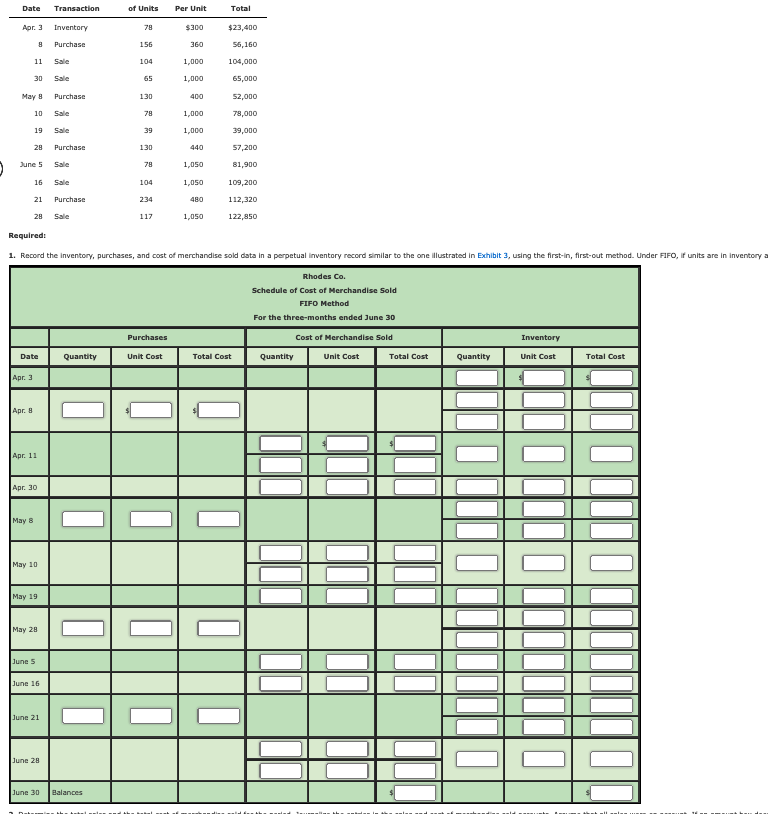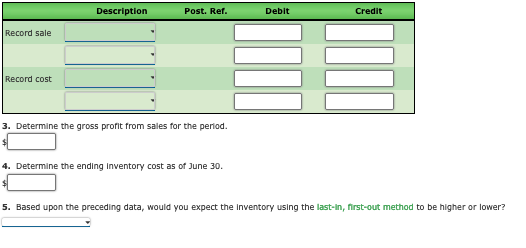1. Record the inventory, purchases, and cost of merchandise sold data in a perpetual inventory record similar to the one illustrated in Exhibit 3, using the first-in, first-out method. Under FIFO, if units are in inventory at two different costs, enter the units with the LOWER unit cost first in the Cost of Merchandise Sold Unit Cost column and in the Inventory Unit Cost column. 2. Determine the total sales and the total cost of merchandise sold for the period. Journalize the entries in the sales and cost of merchandise sold accounts. Assume that all sales were on account. If an amount box does not require an entry, leave it blank.
1. Record the inventory, purchases, and cost of merchandise sold data in a perpetual inventory record similar to the one illustrated in Exhibit 3, using the first-in, first-out method. Under FIFO, if units are in inventory at two different costs, enter the units with the LOWER unit cost first in the Cost of Merchandise Sold Unit Cost column and in the Inventory Unit Cost column.
2. Determine the total sales and the total cost of merchandise sold for the period.


Inventory is the stock that the company held for resale purposes or the goods that are not sold yet and expected to be sold in near future. FIFO is one of the methods of recording inventory in the books of account after evaluation where the first purchased goods are sold first by the company.
Trending now
This is a popular solution!
Step by step
Solved in 4 steps with 4 images









